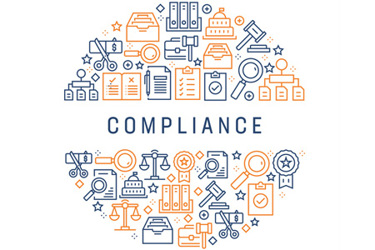Regulatory-CMC: A Core Practice For Successful CDMO Partnerships

By Louis Garguilo, Chief Editor, Outsourced Pharma

Regulatory CMC.
That’s the two-word common denominator running through the career of Sai Prathyusha Bhamidipati. That career includes positions at Jansen (J&J); Hospira (Pfizer); Amgen; Sage Therapeutics; Vertex Pharmaceuticals; and since last year, Moderna.
So what exactly is Regulatory CMC? And what are the implications for the practice of which when dealing with CDMOs?
By (concise) definition, Regulatory-CMC (Chemistry, Manufacturing, and Controls) focuses on ensuring compliance with regulations regarding the production and quality control of pharmaceutical products.
Bhamidipati joined Moderna in May 2024 to lead the Regulatory CMC group specific to the Latent Vaccine portfolio. 
“I've seen a lot of decisions being made around how to successfully engage CDMOs, what really drives those decisions, and what might fail as a result,” says Bhamidipati.
“A key area of concern is that not everything is done from a regulatory-centric approach. If it were, it would help maximize success with CDMOs.”
We’ll dive into that approach momentarily, but let’s lean a bit more of her development as a biopharma professional, one seemingly predestined to be a Reg-CMC professional.
R-CMC Centricity
Bhamidipati received an undergraduate degree in pharmacy, and a masters in regulatory affairs, at Northeastern University. Among the courses offered, she says, was one focused on module 3 (*see below), which is the primary documentation associated with CMC, “so very complex in nature,” she says.
“That course,” she explains, “triggered my interest in learning more about CMC and being a part of those complex activities."
After graduation, Bhamidipati began working as a contractor with Johnson & Johnson within, of course, the Reg-CMC space.
“I started off with the basic work of submitting annual reports and other assignments,” she says, “but gradually, understanding the nuances of what goes into the scientific side of CMC peaked my interest."
“I loved learning how these amazing scientists make products available for patients, and that evolved as my career interest.”
On the subject of external partners and when you think about hiring a CDMO, she says “you must understand the regulatory nuances of specific modalities across multiple regions, specifically and primarily between the major markets such as US, Europe and Japan.”
She for one is never detered, or even bothered, by these nuances – or the additional work they cause at a biopharma organization. All these regulatory variances, she believes, “are approaches that aim at safety, efficacy, quality, and consistency in manufacturing.”
This regulatory-slash-CMC attitude starts with understanding, accepting, and navigating through all the above that should propel a drug sponsor forward in its activities.
Therefore, when an you look outward to establish a CDMO relationship, look closely at its history of quality and regulatory compliance; the ability to consistently manufacture; and the capabilities to produce within the kind of modality and the desired locations you select.
Guiding questions driving Bhamidipati's CDMO explorations and analysis start off with that focus on consistency and compliance, including:
- Technical Expertise for consistent product: Is the organization structured to consistently deliver the same high-quality product with every output?
- Compliance with regulations: Have they been able to demonstrate compliance with the expectations of health authorities, for example with Annex 1 guidelines? Are they able to release the product for EU-based inventory management?
- Quality Management Systems: What kind of quality systems do they use to set up their batch records, and as importantly, how do they share information with the organization/sponsor and or with FDA if requested do so. of with us? What level of detail and documentation is provided in the partnership?
- Good Documentation Practices: What change control system(s) do they have in place? Do they ensure the maintenance and accessibility of all requisite documentation?
Always helpful in getting sufficient answers to these and other questions, says Bhamidipati, are onsite audits.
Good And Less-Good Results
Bhamidipati gathers valuable learnings “visiting the actual development and production sites along with my quality colleagues.”
“These visits provide firsthand insights into CDMO quality-compliance documentation, whether they are QP-certified to release the product, able to maintain a master file and perform associated change controls, especially if they are filing an IND or BLA on our behalf.
“We can also assess the eCTD structure they have established to ensure everything is aligned with regulatory expectations.”
These are items she seeks to ascertain overall from her regulatory-CMC vantage, “and a coordinated quality standpoint.”
Importantly, audits allow sponsors “to complete a thorough risk assessment around the CDMO and our product.”
But what if all the right questions are not asked? Or asked but not adequately answered, yet the biotech – pushed by time, stressed by finances/funding, and under other pressures, as well as due to any degree of naivety – finalizes the CDMO contract and initiates a project?
What does the Reg-CMC professional do then?
As the (hurried) tech transfer and work kickoff initiate, explains Bhamidipati, a flow of documentation/communication from the CDMO will commence to the quality/regulatory/project-managing professionals at the sponsor.
At this point, she says, “it’s our role to keenly observe certain nuanced details, for example inappropriate batch records, or any lack of source documentation that offers traceability – even if the CDMOs responds they have provided adequate source documentation!”
“I’m always alert to any discrepancies which may not be compliant with our specifications and localized regulations,” she says. These issues can push out timelines, slow progress, delay filings, and sink the relationship altogether.
“If only somebody had been allowed to include a regulatory-CMC-centric thinking early on, the entire risk-assessment score might have looked quite different,” laments a concerned Bhamidipati. “A more thorough decision about the CDMO and the relationship could have taken place.”
After all, she concludes, “We're selecting external partners for their technical expertise. Any misalignment will require additional time, resources, and financial burden to remediate compliance and other gaps, before any CMC filings can ever go forward.”
--------------
*In a CMC (Chemistry, Manufacturing, and Controls) drug application, "Module 3" refers to the section within the Common Technical Document (CTD) that provides detailed information about the quality of the drug substance and drug product, including manufacturing processes, controls, and relevant chemical and pharmaceutical data, essentially outlining how the drug is made and ensuring its consistency and quality throughout production.
